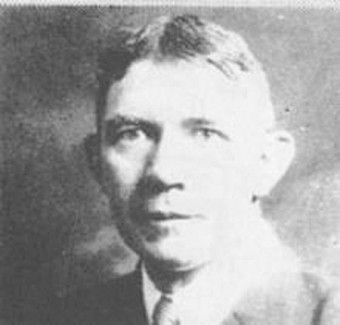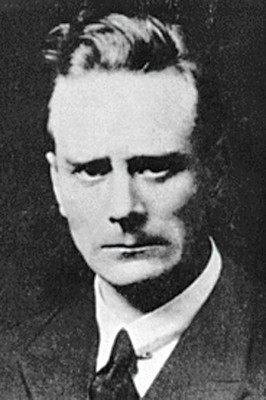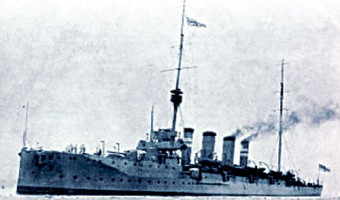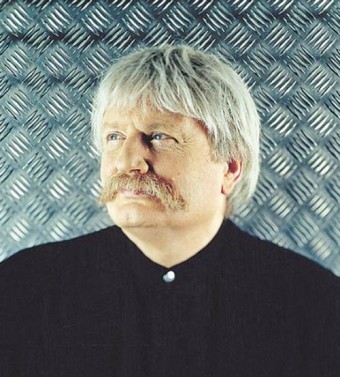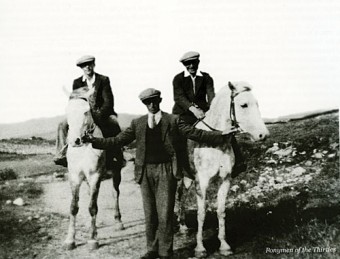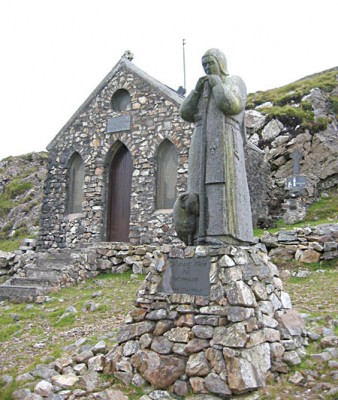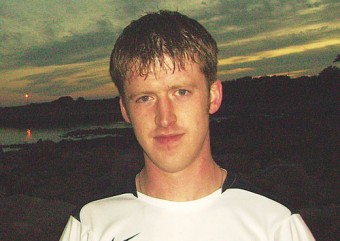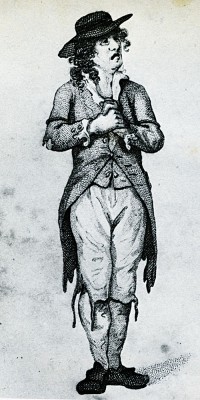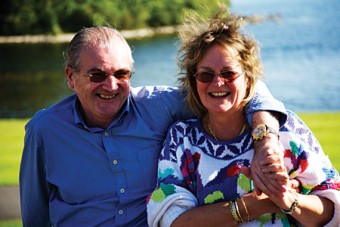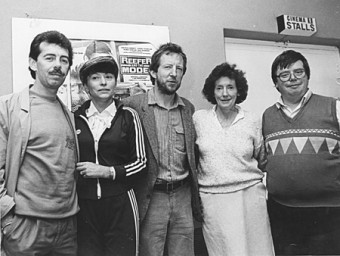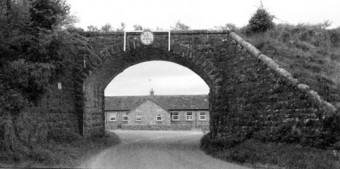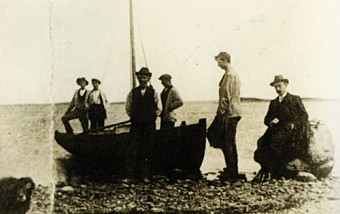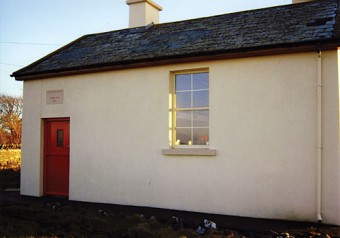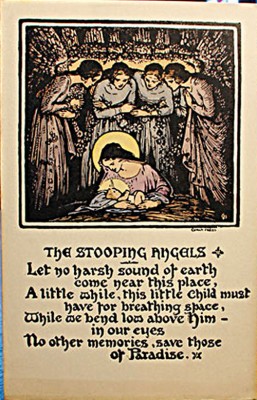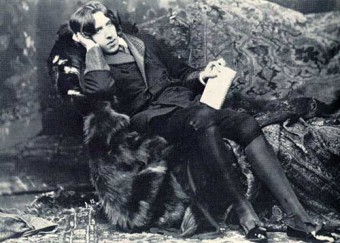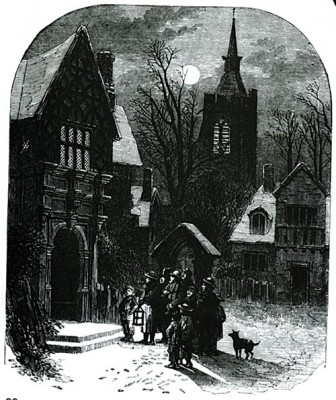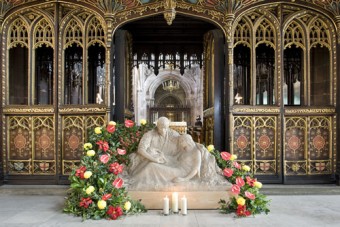The blacksmith from Craughwell
Thu, May 12, 2011
The participants in the Galway Rising of April 1916 anticipated their arrest and humiliation. During Easter Week, while the rebels were attacking police stations in parts of east Galway, and threatening an invasion of the town, the RIC was quick to round up all the usual suspects. They were easily recognised. Their public training, and their interruptions of recruitment meetings made them well known to the police. They were loaded into open-top vehicles and paraded ‘for the entertainment of the townsfolk’. Volunteer Frank Hardiman remembered being set upon and beaten by rowdies at a number of places, and pelted with mud by the town’s inhabitants.
Read more ...Fear and loathing in the towns and villages as rebels divided on continuing the struggle
Thu, May 05, 2011
Following the news of the Rising in Dublin on Easter Monday April 25 1916, Galway was in the grip of rumour and anxiety. The Galway ‘rising’, consisting of about 600 men led by Liam Mellows, but poorly armed, was creating mayhem in the county. Police ( RIC) stations were being attacked, telegraph poles were cut down, and trains were not running. Galway was virtually cut off from news of developments elsewhere. Then panic ensued when on Tuesday a British warship, HMS Gloucester, steamed into the bay and indiscriminately opened fire into the coastline, and further inland. Refugees began to arrive in the town.
Read more ...Galway - the most shoneen town in Ireland!
Thu, Apr 28, 2011
On Tuesday April 26 1916, 95 years ago this week, many people in Galway town were gripped by rumour and hysteria. Rebellion in Dublin had been the sole source of conversation the evening before, but now telegraph lines were cut down, no trains were running, and news that rebellion had broken out in Oranmore, Clarinbridge and Athenry, brought events closer to home. All roads out of the town were considered too dangerous to travel. All shops and factories closed. People stood in small groups discussing the situation. There were fears that the rebels were approaching the town.*
Read more ...‘Ring out, wild bells’ to welcome this great composer
Thu, Apr 14, 2011
The composer Karl Jenkins is the bane of many music critics’ lives. They cannot understand him; or why he is so popular with serious music lovers. A recent study shows that he is now the most performed living composer in the world. If Jenkins was a Mick Jagger or a Paul McCartney then, some critics argue, different criteria would apply. But this man takes the most solemn themes, such as the Mass, and more recently Stabat Mater (the intensely moving 13th century hymn to Mary as she stands at the foot of the Cross), and presents them in an astonishing, and exciting, new format that makes you sit up, and ask: “What was that?” It is certainly not in the classical tradition.
Read more ...Can Ming the Merciless save our turf cutting heritage?
Thu, Mar 31, 2011
I have been watching the progress of Luke ‘Ming’ Flanagan with some amusement, and admiration for a number of years. Amusement because of his long running campaign to legalise cannabis, which has to be a no-hoper. He has been convicted on several occasions for possession of the drug, but undaunted, he sent a beautifully rolled cannabis cigarette to every politician in the Oireachtas as part of his campaign, pleading for them to enjoy a smoke, inhale deeply, and support his cause. That man doesn’t know the meaning of ‘no’.
Read more ...The time that Máirtín Plásán was best man at the wedding
Thu, Mar 24, 2011
“They’re coming. They’re coming, look! They’re coming at last,” said old John Larry. “ Look at them down in Leighleitir”... “ Who’s winning?” said Micilín Deaid, “It’s not our giorrán by any chance?” “No, I don’t think so,” said another. “There’s a black one in front with a white star”.... “ Come on Garrai Gamhain!” shouted one. “ Come on Leamhcoill!” roared another. “ Up Leitir Í! Said a few young lads. “ Come on Cnoc ar Eas Thoir!” answered others.
Read more ...The place where St Patrick wrestled with a bull...
Wed, Mar 16, 2011
That great observer of landscape Tim Robinson reminds us that Connemara is full of saints. Perhaps there isn’t a saint in the place today, but they were certainly there in profusion in earlier times. Looking around him from the heights of Errislannan, near Clifden, Tim observes that practically every one of the headlands and islands that he sees has its saint. There is St Roc at Little Killary, St Colmán on Inishboffin, St Ceannanach at Cleggan, St Féichín in Omey and High Island, and all the saints in the tangled archipelagos east of Carna, Bearchan, Breacán, and Enda; and the obscure Mocán or Smocán of Barr an Doire near An Cheathrú Rua, ‘and finally the great St Colm Cille who has all the south Connemara coast under his protection...’ But no St Patrick. I can only surmise that Connemara has so much beauty, so many stories of its people and places, its own music, magic and legends, that even the sandalled steps, and gentle words of the great Irish saint would have come and gone unnoticed.
Read more ...Salthill garden will remember the ‘kindness of strangers’
Thu, Mar 10, 2011
In one of the strangest ironies of fate that I ever heard was the day, early 2006, when the renowned Irish singer Eleanor Shanley called into Charlie Lennon’s Cuan Recording Studios in Spiddal. Eleanor, with her distinctive, rich lyrical voice, was looking for a new song. She talked to her friend Éamonn Goggin, a sound engineer at Cuan. Éamonn’s passion was music. He loved nothing more than sharing his knowledge with friends. He enthused about a song written by Mike Scott of the Waterboys and Anthony Thistlethwaite, called ‘Strange Boat’. It was written some years ago, but it was a great song, that just needed some updating, a new look. ‘ We’re sailing on a Strange Boat/ Heading for a strange shore/ Carrying the strangest cargo / That was ever hauled aboard....’ Éamonn said it was ideally suited for Eleanor’s voice.
Read more ...Humanity Dick’s last battle
Thu, Feb 24, 2011
Humanity Dick Martin’s daughter, Harriet Letitia, wasn’t the only one to write about her father’s victory at the notorious Galway election of 1826. It was such a blatant hijack of votes, a total fraud, and swindle, that it outraged the investigating committee from the House of Commons some months later. But Martin was desperate. Despite his enormous estates, consisting of 196,540 acres, virtually the entire territory of Connemara stretching westwards from Galway, he was deeply in debt. He was a useless landlord in the sense that his collection of rents was haphazard and irregular. He had a generous heart. He did not press his tenants for money.
He hoped that the marble quarry on his land would restore his fortunes, but the business of promoting the deep green marble was slow and incompetent. While he was a member of parliament he was safe from his creditors. But if he should lose his seat, he would also lose that immunity.
Read more ...‘Fighting FitzGerald’ tests Martin’s humanity
Thu, Feb 17, 2011
In 1835 Harriet Letitia Martin, the daughter of the famous ‘Humanity’ Dick Martin of Ballinahinch castle, Connemara, wrote a book, Canvassing (published by Saunders & Otley, London), which, I imagine, was avidly read in Galway*. It told the story of the last time her father stood for parliament in 1826. He was successful, but a subsequent parliamentary investigation showed that fraud, trickery, bullying, intimidation, and misrepresentation on a vast scale had taken place. His tenants came into Galway from all over Connemara in a variety of disguises and voted repeatedly. He was dismissed from parliament, and consequently faced the wrath of his many creditors. As a member of parliament he enjoyed immunity from prosecution. Now he was thrown to the wolves.....
Read more ...Taking The Cotton Box magic to Kuwait
Thu, Feb 10, 2011
It’s hard to imagine that people had the courage, or foolishness, to start up a business without a phone. For most of the 1970s, if you hadn’t an old fashioned phone already, you were out in the cold for a period of at least nine months to two years. The Industrial Development Authority was howling with rage saying that new industries were interested in coming to Ireland, but laughed when they were told “ That’s grand. But, we’re sorry. At the moment there are no phones...”
Read more ...Fred Diviney’s ‘Cinema paradiso’
Thu, Feb 03, 2011
One of Fred Diviney’s scariest moments (Fred was a cinema projectionist in Galway for almost 40 years), was in 1978. The Deerhunter, with its haunting theme, and stars Robert de Niro and Meryl Streep, was the must-see movie of the year. There was huge excitement when the Claddagh Palace announced that it would show the film on Friday. The queue was down to Murray’s at Nile Lodge, but there was panic in the tiny projection room at the Palace. In those pre digital cassette days, the film arrived in 12 reels, late that afternoon. As Fred lined them up for the projector he saw that reel five was missing. He phoned the film distributors, Ward Anderson, in Dublin. They told him not to worry. The missing reel would be sent down by taxi.
Read more ...The school under the railway bridge
Thu, Jan 27, 2011
Apart from the profound influence that teachers had on their young students at Crumlin National School, Ballyglunin, Co Galway, the passing trains on the old Claremorris-Limerick line told them all the time of day, and the seasons of the year. The old school was located practically under the railway bridge. The train passed only yards from the classrooms. “We would wave out at the trains passing....” recalls Phil Forde, who stared school there when she was three years old in 1935. “There would be extra trains during the beet campaign. The beet would all go to the station in the horse and cart, and there would be about 20 wagons after the steam engine.”
Read more ...Two men of destiny meet on Tawin Island
Thu, Jan 20, 2011
In his interesting biography of Eamon de Valera*, Diarmaid Ferriter reports that in December 2000 gardaí seized 24 love letters from de Valera to his young wife Sinéad, which were being advertised for auction by Mealy’s of Castlecomer. It was believed that the letters were stolen in the mid 1970s from the de Valera family home. The owners, who had bought them in England some years previously in an effort to ensure their return to Ireland, were unaware that they had been stolen.
Read more ...‘Henceforth Irish is to be the language of Tawin’
Thu, Jan 13, 2011
As letter writers to newspapers know, as soon as you make your point, and satisfied that it is the only salient point worth making, you can be brought back to reality smartly by a riposte! Sir Roger Casement’s letter in the Irish language newspaper An Claidheamh Soluis, in the late summer of 1904, was a hard hitting criticism of the attitude of those parents who favoured that their children learned to speak English, instead of Irish. “The general mass of the Irish speaking parents have kicked the language out of doors.” He fully supported the struggle of the people of Tawin, a small island on the east side of Galway Bay, who had withdrawn their children from the local national school because they wanted their children educated through Irish. As a result the authorities withdrew the schoolmistress, and the school, unused for years, fell into disrepair. They warned the islanders that if they wanted the school to re-open they had to pay for its repair.
Read more ...Sir Roger Casement’s support for a small island in Galway Bay
Thu, Jan 06, 2011
Sir Roger Casement was a notable humanitarian and a British consul by profession but, ironically, an anti -Imperialist by nature. He over-stepped his diplomatic role to fiercely condemn Belgium for its brutalisation of the people of Congo*. His report, published in 1904, was however, well received by the British establishment, perhaps because it feared that little Belgium was getting too big for its boots, and too wealthy from its African ventures. Casement received a knighthood.
In August of the same year as the Casement Report was published, and not withstanding the enormous publicity it generated, Casement was enjoying a brief holiday in the relative peace and quiet of the west of Ireland. He was developing an interest in the Irish language. He was not happy to see that it was being denigrated as the language of ‘the old and poor Ireland’. He saw in many locations that “The general mass of Irish speaking parents have kicked the language out of doors”.
Read more ...The Christmas Cards
Thu, Dec 30, 2010
My great aunt Annie Dunne spent the last few years of her life in a nursing home, on Longford Place in Monkstown. It was just beside where we lived, on Longford Terrace. It was literally a stone’s throw. She was a precious person for me, I had known her as a little boy in the townland of Kelsha, near Kiltegan in Wicklow, where she had shared the little subsistence farm of her cousin Sara Cullen. My sister Siuban and I had been sent down there for a whole summer, lengthening into autumn, while our parents tried to set themselves up in London.
Read more ...Poor Oscar Wilde, he died as he lived – beyond his means
Thu, Dec 30, 2010
Before his untimely demise Oscar Wilde was one of the most successful authors and playwrights of his generation, but he managed to leave only a paltry will, according to documents just released online.
Read more ...The Story of the Bells of St Nicholas
Thu, Dec 30, 2010
The Collegiate Church of St Nicholas, dedicated to St Nicholas of Myra, patron saint of children (better known as ‘Santa Claus’) and of mariners, is the largest medieval parish church in Ireland in continuous use as a place of worship. Though there is some disagreement about when it was built, it was finished by 1320. The building was extended by the Lynch and ffrench families when the 14 tribes were at the peak of their power during the 16th century. Christopher Columbus prayed there during a visit to Galway in 1477, and the building suffered the iconoclasm of Cromwell’s troops, who used the church as a stable after the siege of Galway in 1652. Today it occupies the centre of the city, renowned for its annual Christmas carol service, which is attended by the mayor and members of the city council, and members of the corporation, all in robes, preceded by the symbols of the city; its silver sword and mace.
Read more ...The Holy Night Statue in Manchester’s great cathedral -
Thu, Dec 30, 2010
Mary Johnson is a frequent reader of the Old Galway page, and at times makes some good comments. She was not impressed at my description of the first ‘crib’ set up by St Francis of Assisi at Greccio, on a snowy December night in 1223, more than 780 years ago. She felt the description of the Virgin was as sweet as barley sugar. Instead she wrote about her visit to Manchester’s cathedral and Josefina de Vasconcellos’ moving sculpture. Here is what she had to say:
Read more ...